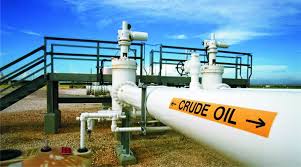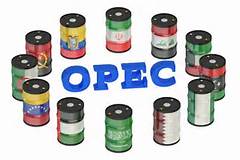Brent Slumps To Below $100/b, Federation Account Will Be Further Starved Of Funding

Global benchmark Brent crude tumbled to below $100 a barrel on Tuesday due to a stronger dollar, demand-sapping COVID-19 curbs in top crude importer China and fears of a global economic slowdown. Brent crude futures were down by $7.62, or 7.1%, at $99.48 a barrel. U.S. West Texas Intermediate crude was down $7.69, or 7.3%, at $96.42. Even with crude oil price above $100 Nigeria seems not to have benefitted from the price rise as the Nigerian National Petroleum Company Limited (NNPC) failed to carry out its statutory obligations to the federation for the fifth month in May 2022, with the firm now recording a N704 billion deficit for the year thus far. NNPC in its latest monthly presentation to the Federation Account Allocation Committee (FAAC), the national oil company also disclosed that it deducted another N327.07 billion as shortfall in the month under review.
With a projected N1.473 trillion payment to the federation for the entire year and a monthly remittance of N122.767 billion, the implication is that the federal, state and local governments may continue to have cash shortages for a while since the payments constitute a major revenue source. This could get worse with falling price of Brent crude. Last month, the NNPC stated that it would deduct a record N874.5 billion when the FAAC met this June, but the latest data shows that the entire revenue of the firm for the month was not even enough to net off such a huge sum. Part of the amount has now been deferred till next month.
“Crude trading under extreme pressure this AM as a defensive posture continues with consumer sentiment still in a depressed mode along with a COVID re-surface in China,” said Dennis Kissler, senior vice president for trading at BOK Financial, adding that a record dollar was triggering more selling liquidation. The dollar index , which tracks the unit against a basket of six counterparts, earlier climbed to 108.56, its highest since October 2002. A stronger greenback usually weighs on oil prices as it makes the dollar-priced commodity more expensive for holders of other currencies. Investors have been dumping petroleum-related derivatives at one of the fastest rates of the pandemic era as recession fears intensified. Hedge funds and other money managers sold the equivalent of 110 million barrels in the six most important petroleum-related futures and options contracts in the week to July 5. Fears of an economic downturn also pushed down the S&P 500 and the Nasdaq. Renewed COVID-19 mobility curbs in China weighed on prices as well. Multiple Chinese cities are adopting fresh restrictions, from business shutdowns to broader lockdowns, in an effort to rein in new infections from the highly infectious BA.5.2.1 subvariant of the virus. U.S. President Joe Biden will make the case for higher oil production from OPEC when he meets Gulf leaders in Saudi Arabia this week, White House National Security Adviser Jake Sullivan said on Monday.
“Little hope is being assigned to Biden’s visit to Saudi Arabia unlocking more production from them or the UAE,” Jeffrey Halley, OANDA’s senior market analyst for Asia Pacific, said in a note. Industry insiders, OPEC sources and other experts have questioned whether, with current output of at least 10.5 million barrels per day, Saudi Arabia really has another 1.5 million bpd up its sleeve that can be brought online quickly and sustained. Spare capacity within the Organisation of the Petroleum Exporting Countries (OPEC) is running low, with most producers pumping at maximum capacity. U.S. Treasury Secretary Janet Yellen is in Asia to discuss ways to strengthen sanctions on Moscow, including a price cap on Russian oil to limit the country’s profits and help to lower energy prices. International Energy Agency (IEA) Executive Director Fatih Birol said that any price caps on Russian oil should include refined products. Western sanctions on Russia over the war in Ukraine, which Russia calls a “special military operation”, have disrupted trade flows for crude and fuel. OPEC forecast that world oil demand will rise by 2.7 million bpd in 2023, slightly slower than in 2022, with consumption supported by better containment of the pandemic and still-robust global economic growth.









